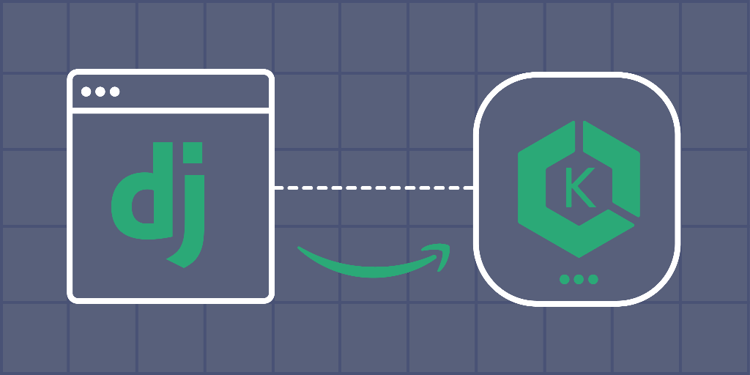This device is not compatible.
PROJECT
Deploy a Django Application Over Amazon EKS
In this project, we’ll deploy an e-learning website developed using Django over the Amazon Elastic Kubernetes Service (Amazon EKS). We’ll create clusters and services using the eksctl and kubectl tools, monitor the status, and then finally deploy the application.
You will learn to:
Build and push a containerized web application to Docker Hub.
Create an Amazon EKS cluster.
Deploy an Application over Amazon EKS.
Use the AWS CLI to configure cloud applications.
Skills
Cloud Deployment
DevOps
Using AWS Cloud Services
Prerequisites
Basic knowledge of Docker images
Basic knowledge of Kubernetes
Basic knowledge of AWS CLI
An AWS account
Technologies
Django
Kubernetes
Amazon EKS
Project Description
In this project, we’ll deploy a custom e-library application developed using Django over the Amazon Elastic Kubernetes Service (Amazon EKS). Kubernetes is an open-source platform that lets us deploy and manage containerized applications. Amazon EKS is a managed service that allows us to deploy our applications on Kubernetes without the hassle of installing or maintaining our Kubernetes cluster, control plane, and nodes.
We’ll start with using Docker to containerize the application and push it to Docker Hub for later use. Then, we’ll create different Kubernetes resources using the Kubernetes command line tool. Finally, we’ll access the deployed application via the Internet.
Project Tasks
1
Set Up the Environment
Task 0: Explore the Application
Task 1: Configure the AWS CLI
Task 2: Containerize and Push the Application
Task 3: Create a Cluster
2
Deploy and Access the Application
Task 4: Create a Namespace
Task 5: Create a Deployment
Task 6: Create a Service
Task 7: Access the Application
3
Cleanup
Task 8: Delete the Resources
Congratulations!
Subscribe to project updates
Atabek BEKENOV
Senior Software Engineer
Pradip Pariyar
Senior Software Engineer
Renzo Scriber
Senior Software Engineer
Vasiliki Nikolaidi
Senior Software Engineer
Juan Carlos Valerio Arrieta
Senior Software Engineer
Relevant Courses
Use the following content to review prerequisites or explore specific concepts in detail.
